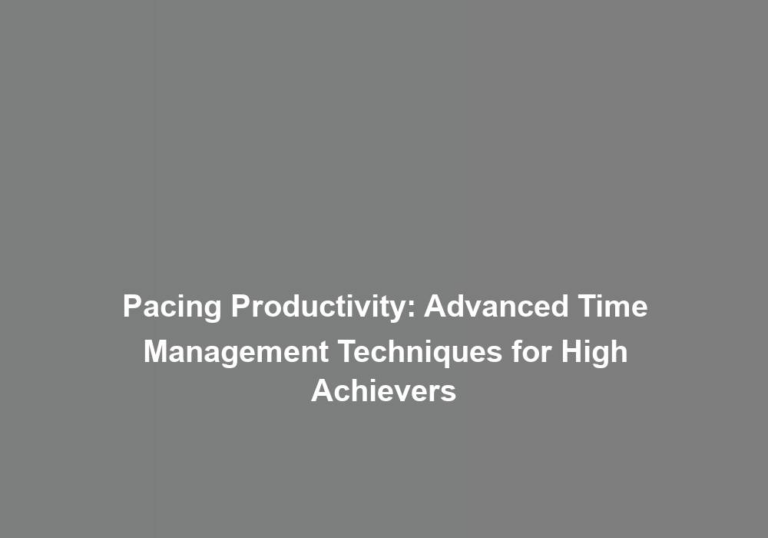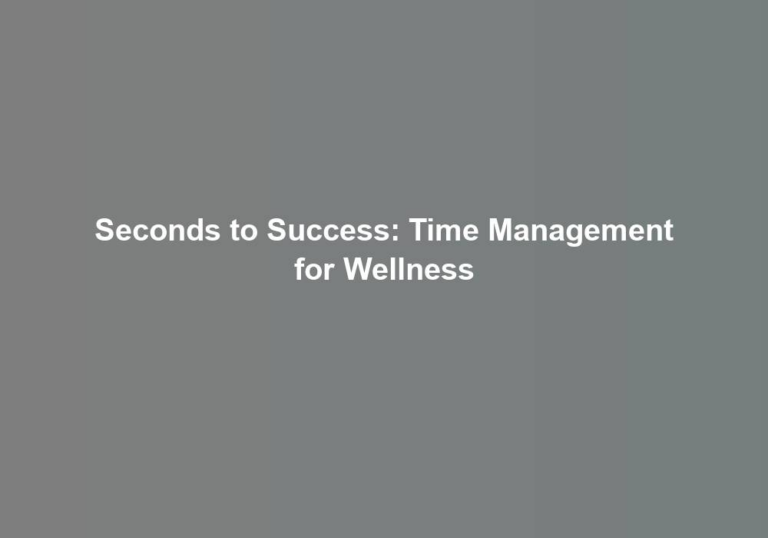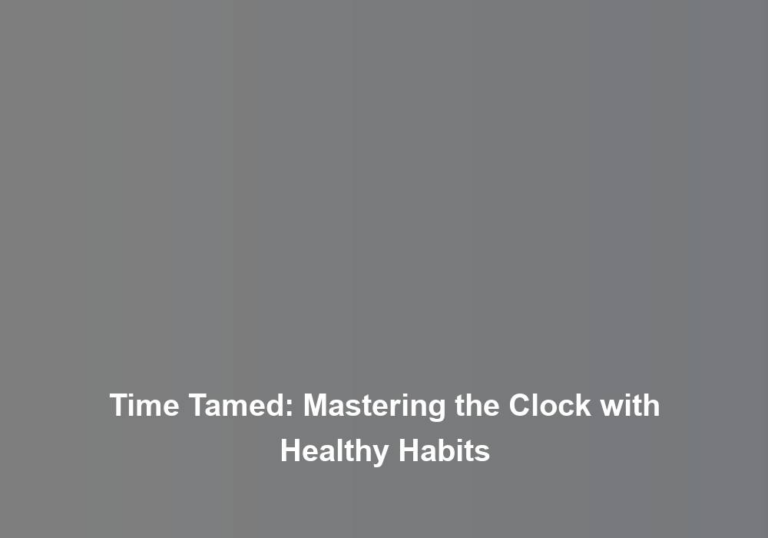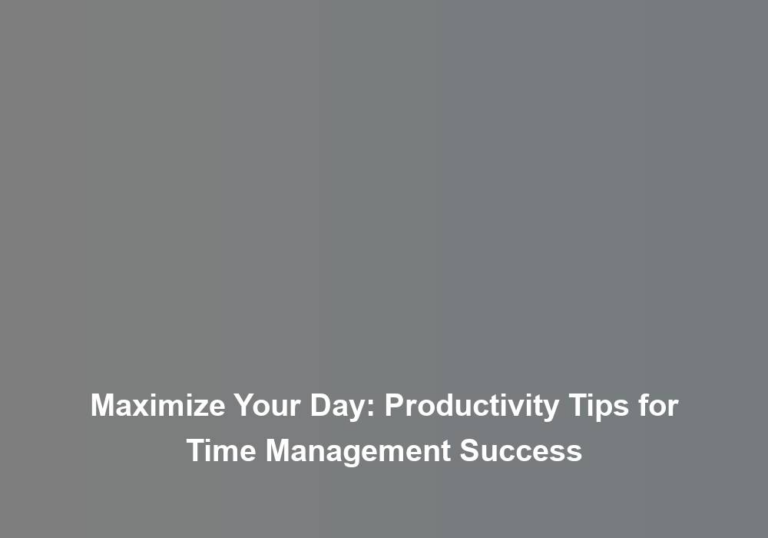Tick-Tock Triumph: Unlocking Productivity with Time Management Mastery
Managing your time effectively is a skill that many strive to master. In todayG??s fast-paced world, finding balance and maximizing productivity can be a challenge. However, there are proven strategies that can help you take control of your schedule and accomplish more in less time. By understanding the principles of time management, you can unlock the potential to achieve your goals and make the most of every moment. But how exactly can you begin to harness the power of effective time management?
The Importance of Time Management
Understanding the importance of time management is essential for achieving your goals and maintaining a balanced life. Time efficiency is crucial for making the most of your day, enabling you to accomplish more in less time. By managing your time effectively, you can strike a harmonious work-life balance, ensuring that you have ample time for both professional responsibilities and personal pursuits.
When you prioritize tasks based on their urgency and importance, you can allocate your time efficiently, ensuring that you address critical matters without neglecting other essential aspects of your life. This approach allows you to fulfill your work obligations while also carving out time for family, hobbies, and self-care. By achieving a work-life balance, you can avoid burnout and maintain a sense of fulfillment in both your professional and personal endeavors.
Effective time management also empowers you to make the most of your day, allowing you to accomplish tasks with focus and purpose. By setting clear goals and managing your time wisely, you can reduce distractions and procrastination, leading to increased productivity and a greater sense of achievement. This approach not only benefits your professional life but also enhances your personal relationships and overall well-being.
Identifying Time Wasters
To optimize your time management, itG??s crucial to identify and eliminate time wasters that can hinder your productivity and work-life balance. Conducting a time audit can be an eye-opening experience. Start by tracking your activities for a week, including work tasks, breaks, and leisure time. This process will help you pinpoint where your time is being consumed unnecessarily. Once you have a clear picture of how youG??re spending your time, it becomes easier to identify areas for improvement.
Distraction elimination is another key aspect of identifying time wasters. Take note of the things that tend to pull your focus away from important tasks. Whether itG??s excessive social media scrolling, frequent interruptions from colleagues, or disorganized workspaces, recognizing these distractions is the first step toward addressing them. Implementing strategies to minimize these interruptions, such as setting specific times for checking emails or creating a designated quiet space for focused work, can significantly enhance your productivity.
Effective Prioritization Techniques
Start by categorizing your tasks based on their urgency and importance to effectively prioritize your workload. Task categorization is a crucial step in managing your time efficiently. Identify tasks that are both urgent and important, and tackle those first. These are your top priorities and require immediate attention. Next, focus on important tasks that may not be as time-sensitive. Schedule specific time slots to work on these to ensure they receive the attention they deserve. Then, consider tasks that are urgent but not necessarily important. Delegate these if possible, as they may not require your personal attention. Finally, tasks that are neither urgent nor important should be minimized or eliminated, as they tend to be time wasters.
When it comes to decision-making strategies for prioritization, consider using techniques like the Eisenhower Matrix. This method involves classifying tasks into four categories: urgent and important, important but not urgent, urgent but not important, and neither urgent nor important. By using this framework, you can make informed decisions about where to focus your time and energy. Another effective strategy is the ABCDE method, which involves assigning priorities to tasks based on their significance. A tasks are the highest priority, while E tasks are the lowest. By employing these decision-making strategies, you can streamline your workflow and ensure that you are consistently working on high-impact activities.
Creating a Productive Schedule
Craft a productive schedule by aligning your daily tasks and activities with your most productive hours and energy levels. Understanding your natural energy peaks and lows can help you allocate time for more demanding tasks during high-energy periods and reserve low-energy times for less demanding activities. HereG??s how you can enhance your productivity by creating a schedule that suits your energy levels:
-
Time Blocking: Allocate specific blocks of time for different tasks and activities. By dedicating set periods to particular tasks, you can maintain focus and prevent distractions. For example, designate a block of time in the morning for responding to emails and another for creative work in the afternoon.
-
Morning Routine: Begin your day with a morning routine that sets a positive tone for the day. Incorporate activities like exercise, meditation, or reading to kickstart your energy levels and focus.
-
Task Batching: Group similar tasks together to streamline your workflow. For instance, schedule a block of time for making phone calls, another for brainstorming sessions, and a separate block for administrative duties. This approach minimizes context switching, allowing you to be more efficient.
Maintaining Momentum and Focus
Enhance your ability to maintain momentum and focus by implementing strategies that align with your energy levels and work habits. Staying motivated and avoiding distractions are crucial for maximizing productivity. To maintain momentum, start your day with tasks that resonate with your energy levels. If youG??re a morning person, tackle the most challenging projects early on. If you tend to hit your stride in the afternoon, schedule your most demanding tasks for that time. By aligning your work with your natural energy rhythms, you can maintain momentum and focus more easily throughout the day.
ItG??s also important to set specific, achievable goals to stay motivated. Break down larger projects into smaller, manageable tasks, and celebrate your accomplishments along the way. This can help you stay focused and maintain a sense of progress, which in turn boosts motivation.
To avoid distractions, create a designated workspace that signals to your brain that itG??s time to focus. Minimize disruptions by silencing non-essential notifications and communicating your need for uninterrupted work time to those around you. Additionally, consider using time management techniques such as the Pomodoro Technique, which involves working for a set period, then taking a short break, to help maintain focus and momentum.
Conclusion
YouG??ve got this! Did you know that only 17% of people feel like they have enough time to do everything they need to do? By mastering time management, you can join the ranks of the productive and efficient. So, take control of your schedule, prioritize effectively, and watch your productivity soar. With the right techniques and mindset, you can conquer your to-do list and achieve your goals. Keep ticking and tocking your way to success!







